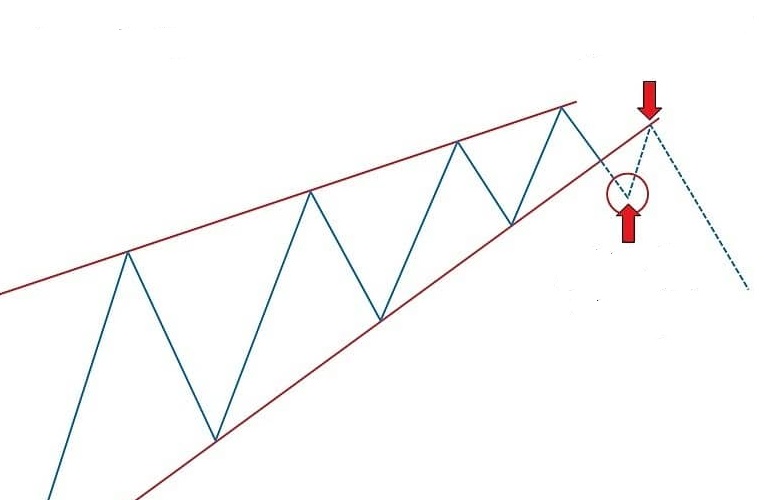Rising Wedge Pattern
Description
A rising wedge is a bearish chart pattern characterized by a narrowing price range with higher highs and higher lows, but with the upper trendline rising at a shallower angle than the lower trendline. Despite its upward slope, this pattern often signals a potential reversal to the downside, especially when it forms in a larger downtrend.
How to Identify
- Look for a series of higher highs and higher lows, forming two converging trendlines.
- The upper trendline should have a shallower angle than the lower trendline.
- The pattern should contain at least three swing highs and three swing lows.
- Volume typically decreases as the pattern progresses.
- The pattern can occur in both downtrends (as a continuation) and uptrends (as a reversal).
Trading Strategies
Breakout Trading
The most common strategy is to enter a short position when the price breaks out below the lower trendline.
- Entry: When price closes below the lower trendline
- Stop Loss: Just above the last swing high within the pattern
- Take Profit: Project the height of the wedge from the breakout point downwards
Anticipation Trading
More aggressive traders might enter a short position near the upper trendline, anticipating the reversal.
- Entry: When price approaches the upper trendline
- Stop Loss: Just above the upper trendline
- Take Profit: At or below the lower trendline
Risk Management
While rising wedges are generally bearish, they can sometimes continue the uptrend. Always use stop-loss orders to protect your positions. Be cautious of false breakouts, and consider waiting for a confirming candle or increased volume on the breakout before entering a trade. The longer the pattern takes to form and the more touch points on the trendlines, the more significant the eventual breakout is likely to be.
Example

In this example, we can see the price forming higher highs and higher lows, but with the upper trendline rising at a shallower angle. The price eventually breaks out below the lower trendline, signaling a potential reversal of the prior uptrend.
